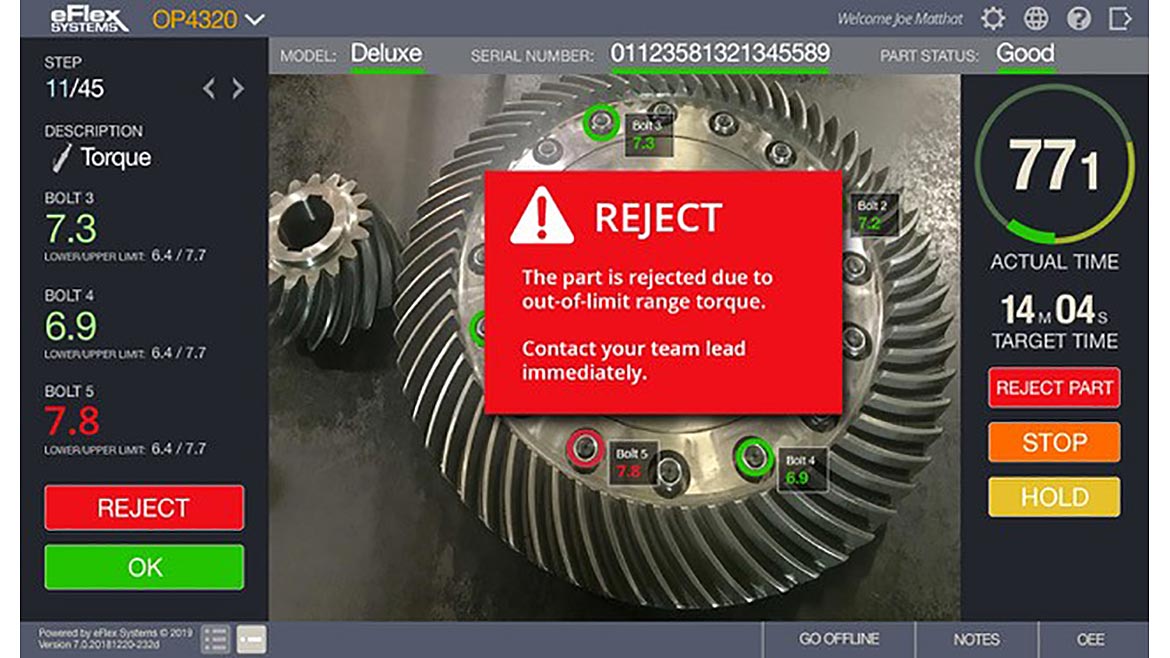If you’re looking to improve quality, software is often a good place to start.
"Since the pandemic, manufacturing companies are struggling to adapt to several global macroeconomic phenomena," says Marc Soucy, president and co-founder, InnovMetric. "Today, they face inflationary pressures, and their supply chains are disrupted. Tomorrow, they will have to manage the difficulty of recruiting and retaining skilled labor and start decarbonizing their operations. The consequence of these factors is that the profits of industrial manufacturers are currently under pressure."

How To Improve Quality With Software
Stephen Bieszczat, chief marketing officer of DELMIAWorks, has seen both good and bad practices on his manufacturing tours. Here he explains software's role in manufacturing trends, how quality professionals can best use software to improve manufacturing processes, and how to tackle your to-do list.
Listen to more Quality podcasts.
Today’s trends to watch are the labor shortage, digital transformation, Industry 4.0 (or 5.0 now), artificial intelligence and machine learning, according to Andrew Robling, principal product manager, Epicor. "Software can help with all of those trends, even when you look at the labor shortage, and help onboard people faster. The whole digital transformation is all centered around using technology to gain a competitive advantage, using things like IoT, digital twin, implementing more things like statistical quality control."
"One of the key pillars of the quality professionals out there is the idea of continuous improvement. That can’t just stop on the shop floor, it has to be something they use with their software solutions," Robling says. "It’s important to keep that project moving forward. Any software company is going to be happy to educate you on the software. A lot of times people try to figure things out themselves. Education is really a small investment that has the potential to provide gains through the better use of software."
Robling cited the example of Excel, which he uses every day, but probably only 50% of the features.
Perhaps you are interested in making some changes with your software but are worried about the cost. "The reality is that a small quality improvement can lead to substantial cost savings," Robling says. "Can you afford not to do it? That’s the comeback."
"Twenty years ago, only the quality staff would be using the software. Today they’ve branched out, now operators might be doing checks. I’ve heard this: ‘My team is not smart enough to use this technology on the shop floor.’ I tell you, I’ve never seen that to be true," he says. "Everyone uses technology. Today’s workers love technology."
How Can Quality Professionals Take Advantage Of All Of The Features In Their Software Programs?
Stephen Bieszczat, chief marketing officer of DELMIAWorks, says companies should pick certain features they want to adopt.
"The number one thing I hear when I go and visit plants is ‘Gosh, there’s so much more to this software than we’re taking advantage of.’"
He says that companies adopt a software and then tend to plateau. At the same time they’ll question why they aren’t using more features. But there is a way around this.
"We recommend that they sort of put themselves on a continuous improvement program where they commit to adopting one additional feature or capability every quarter or every six months," he says. "And we help them roadmap that out or they roadmap themselves."
For example, they could create a plan to start using in-line quality inspection, he says. Once this is done they move on to the next item on their checklist. "But it has to be a conscious effort to move beyond their current levels of usage and sort of break through plateaus. Make a plan and make it a manageable plan at a cadence that businesses can adopt and implement."
Of course, improvement takes work and there are many places where this is not happening. Bieszczat has been on tours where production halts to wait for an inspector to arrive. "In a well-run shop, you’ll see an inspector showing up within minutes of when they are supposed to."
Soucy offers these suggestions: "Firstly, quality professionals should test the quality of technical support during product evaluation. Have my questions been answered correctly? How long did it take from my initial communication to receiving the response? What was the qualification of the person to whom I presented my problem?
Secondly, quality professionals should also analyze the quality of the self-learning material provided with the product and the ease of accessing it.
And lastly, they should participate in user communities through seminars, conferences, and forums in order to improve their knowledge and exchange with other users."
If your plant is looking for more ways to improve, software can help in several ways.

How Can Quality Professionals Best Use Software To Improve Their Manufacturing Processes?
"Software can improve their manufacturing process," Robling says, "especially if you couple it with continuous improvement initiatives." For example, integrating software with equipment on the shop floor, and process control. Then—of course—using the data being measured. As Robling says, "If no one does any analysis on it, what’s the point?"
"We have entered a new era where data is crucial," Soucy says. "Quality professionals should therefore look for three things in the software solutions they use:
- Digital data management on centralized servers, so that no data is hidden on local hard drives.
- Easy and controlled access to data, using search engines and permission management.
- Open solutions that interconnect with enterprise digital solutions, so data can automatically flow from one system to another digitally."
What Advice Do You Have For Manufacturers About Updating Their Tools And Improving Quality?
"When implementing new tools, and particularly for digital transformation projects, it is important to go about it gradually, without disrupting business operations while seeking employee feedback," Soucy says. "Always start by identifying bottlenecks and other potentials for improvement, then prioritize the identified projects and carry them out gradually, one at a time. By quickly taking the pulse of the teams in the field, it is possible to seek additional efficiency gains and thus maximize the impact of the improvements. So, at every stage of deployment, there should be efficiency gains and cost savings."


